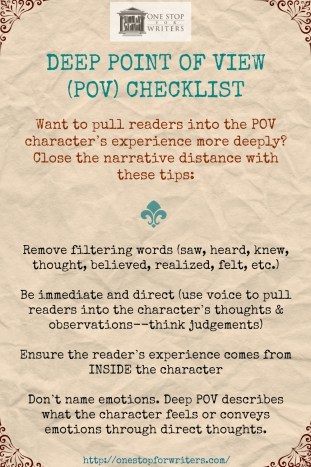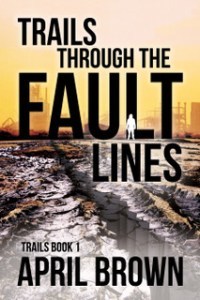Angela Ackerman's Blog: Writers Helping Writers, page 130
October 25, 2016
Critiques 4 U
 Well, folks, in case you hadn’t noticed, it’s October. For me, that means ordering Halloween costumes, enjoying the leaves changing color, and baking all the pumpkin stuff. On the blogging front, Ange and I kicked off our Resident Writing Coach program last week with our first post, which was a humdinger from April Bradley, and the next one will be out next week. Since there was a gap in our calendar, I figured it was a good time for…
Well, folks, in case you hadn’t noticed, it’s October. For me, that means ordering Halloween costumes, enjoying the leaves changing color, and baking all the pumpkin stuff. On the blogging front, Ange and I kicked off our Resident Writing Coach program last week with our first post, which was a humdinger from April Bradley, and the next one will be out next week. Since there was a gap in our calendar, I figured it was a good time for…
CRITIQUES 4 U!
If you’re working on a first page and would like some objective feedback, please leave a comment that includes:
1) your email address. Some of you have expressed concern about making your email address public; if you’re sure that the email address associated with your WordPress account is correct, you don’t have to include it here. But if you do win and I’m unable to contact you through that email address, I’ll have to choose an alternate winner.
2) your story’s genre (no erotica, please)
ONLY ENTRIES THAT FOLLOW THESE INSTRUCTIONS WILL BE CONSIDERED
Three commenters’ names will be randomly drawn and posted tomorrow. If you win, you can email me your first page and I’ll offer my feedback. Best of luck!
The post Critiques 4 U appeared first on WRITERS HELPING WRITERS®.
October 22, 2016
Character Motivation Thesaurus Entry: To Escape A Killer
What does your character want? This is an important question to answer because it determines what your protagonist hopes to achieve by the story’s end. If the goal, or outer motivation, is written well, readers will identify fairly quickly what the overall story goal’s going to be and they’ll know what to root for. But how do you know what outer motivation to choose?
 If you read enough books, you’ll see the same goals being used for different characters in new scenarios. Through this thesaurus, we’d like to explore these common outer motivations so you can see your options and what those goals might look like on a deeper level.
If you read enough books, you’ll see the same goals being used for different characters in new scenarios. Through this thesaurus, we’d like to explore these common outer motivations so you can see your options and what those goals might look like on a deeper level.
Character’s Goal (Outer Motivation): To escape a killer
Forms This Might Take:
a serial killer
a hit man
an assassin
a murderer
a person whom one has gravely wronged in some way
an angry spouse (infidelity)
a person seeking revenge for a past wrong
a family member looking to cash in on an inheritance
an unstable person (due to mental illness, hallucinogenic drugs, demon possession, etc.)
an enemy or a jealous rival
a person wishing to eliminate a witness
a loan shark’s henchmen
a criminal intent on tying up loose ends (after a home invasion, a sexual assault, a kidnapping, etc.)
a stalker
a super-fan suffering from delusions
Human Need Driving the Goal (Inner Motivation): Safety and security
Methods for Achieving This Goal:
hide in a place of concealment
hide in public where one is invisible by sheer numbers
attempting a blitz attack where one attacks and then runs
seeking out the help of police or FBI to track down the killer before he or she finds the character
obtain leverage that may sway the killer into letting one go
hire a mercenary or other type of protection
go off the grid completely
flee the country
enter into a witness protection program
investigate on one’s own to find the killer first
create a trap for the killer (to either capture or kill)
go on the offense in a kill or be killed scenario
use oneself as bait in order to capture the killer
learn new skills to be able to defend oneself (self-defense, weapon training, etc.)
reach out to the killer’s enemies to collaborate or gain help
utilize inherent skills to evade capture or go on the offensive (hunting or tracking skills, utilizing computer hacking or other investigative skills to uncover information or the location of one’s killer, using survivalist training to go off grid or lure one’s enemy into an environment where one has the upper hand, etc.)
fake one’s own death
Possible Sacrifices or Costs Associated With This Goal:
draining one’s financial resources
having to give up one’s job or career to go into hiding
being viewed as a victim when one has worked so hard to not be seen that way by loved ones or society in general
putting one’s family at risk
a family member or friend being captured, hurt, or killed to “get to” the intended victim
having to flee and leave one’s family behind to protect them
asking for help and having that person be killed
making a decision which gets a bystander killed
being injured physically or psychologically
Roadblocks Which Could Prevent This Goal from Being Achieved:
police who dismiss the threat because they don’t believe there is one
police that are inefficient or inadequate
police who are corrupt and can’t be trusted
having little money or resources to seek out help or flee
having family that one must care for or protect (especially if they are not mobile, such as a daughter in hospital care or husband tied to a kidney dialysis routine
the killer being highly technical and therefore able to track one online no matter what safeguards are in place
a killer who is well-connected, and so police are reluctant to go after him without solid proof
a killer who has many resources and so is difficult to out-maneuver
a highly motivated killer willing to cross any moral lines or take any level of risk to end the character’s life
knowing one’s adversary is getting help from someone close to the character, but not knowing who
the character being someone who is marginalized by society and so they are not taken seriously or little help is given
the character having a physical limitation (a broken leg, a medical condition, etc.) that interferes with their ability to flee or defend
the character being unable to travel out of country (because they lack proper paperwork, have a criminal record, etc.)
feeling one is unable to go to the police (because one also wanted by police, illegally in the country, or has loved ones who will be at risk of incarceration or deportation if one seeks help)
a past trauma that causes fear which incapacitates (one’s killer is tied to that trauma event, or one was a victim in an unrelated event, such as kidnapped as a child, etc.)
Talents & Skills That Will Help the Character Achieve This Goal:
sharpshooting
archery
high pain tolerance
self defense
ESP (clairvoyance)
psychokinesis
enhanced hearing
hot wiring a car
strategic thinking
lying
knowledge of explosives
knife throwing
A photographic memory
being mechanically-minded
survival skills
blending in
wilderness navigation
wrestling
Possible Fallout For the Protagonist if This Goal Is Not Met:
capture and/or death
Clichés to Avoid:
discovering one’s killer is the very person one trusted to help
a killer who plays a deliberate game of cat and mouse and leaves clues to their identity that logistically will lead to being caught
Click here for a list of our current entries for this thesaurus, along with a master post containing information on the individual fields.
Image: jarmoluk @ pixabay
Save
Save
The post Character Motivation Thesaurus Entry: To Escape A Killer appeared first on WRITERS HELPING WRITERS®.
October 20, 2016
Do Your Settings Contain An Emotional Value?
As writers, we try to draw readers fully into each scene. Not only do we want them to picture what’s happening, we want them to feel as if they are sharing the POV (point of view) character’s experience.
 Shared experiences are all about emotion, and Deep POV is one of the best ways to encourage feelings to pass between readers and characters.
Shared experiences are all about emotion, and Deep POV is one of the best ways to encourage feelings to pass between readers and characters.
To achieve this level of closeness, details from the character’s world are filtered through the point of view character’s emotions and senses. Readers not only see, hear, smell, taste, and touch what the character does…they feel as well.
Imagine a character on a moonlit walk across a football field, enjoying the clean scent of grass, the glimmer of dew, and the chance to be alone. The reader sees this setting through a filter of peace: all is good in the world.
But change the description (a cold breeze kicking up, the unsettling flap of a raised school flag in the darkness, shadows clustering at the field’s edge) and the mood shifts. All is not good in the world. Unease crawls into the reader’s lap because they experience the setting as the character does. There’s a stretched feeling, a tension that hugs each word. The character (and the reader) is alert, waiting for something bad to happen, for something to go wrong.
As you can see, shared emotional moments help readers immerse themselves into the story. But, we can always do more. If we truly want to show readers who our character is and help them experience what they feel, we should choose settings that have an emotional value.
Settings with an emotional value are meaningful or symbolic. They represent something to the protagonist and possibly other characters.
A location containing an emotional value might remind a character of a past event and the feelings associated with it, good or bad. It may represent safety, loss, failure, or one’s greatest success. It could also reveal a fear, a desire, or hope. The list goes on and on.
 For example, imagine a character being asked to an important business lunch meeting. A writer could choose any restaurant for this scene, but why go with something generic?
For example, imagine a character being asked to an important business lunch meeting. A writer could choose any restaurant for this scene, but why go with something generic?
Instead, let’s choose one with a specific emotional value: the same restaurant where, two years earlier, our character’s girlfriend turned down his marriage proposal.
By making this setting meaningful to the protagonist, everything changes, because even though time has passed, an echo of that old hurt and rejection will affect him while in this restaurant. He may find his gaze turning to the table where he popped the question. The heaviness of the cutlery, the smooth linen napkins, the taste of wine…everything will evoke memories of that day. And, in turn, his turbulent emotions will influence his behavior. Does he blow the meeting, or can he ride the pain out? Suddenly we have tension, conflict, and possible plot complications. And as a bonus, we’ve created a scenario where the reader can’t help but feel empathy for the character.
So how do we go about creating an emotional value within our setting?
The first step is to brainstorm the best setting match for a particular scene. Look at what will happen in the scene and which emotions are at play. Identify your hero’s scene goal—what must he do, learn, or achieve? And what do you want him and the other characters involved to feel?
![Pageflex Persona [document: PRS0000046_00072]](https://i.gr-assets.com/images/S/compressed.photo.goodreads.com/hostedimages/1477058658i/20912383.jpg) Once you know the answers to these questions, imagine different settings where this scene might take place, ones that fit the story and are logical locations for your character to visit. Think about how each one can represent something significant to the protagonist and ties into the outcome of the scene.
Once you know the answers to these questions, imagine different settings where this scene might take place, ones that fit the story and are logical locations for your character to visit. Think about how each one can represent something significant to the protagonist and ties into the outcome of the scene.
If you like, make a list. Often the settings that pop immediately to mind are the most obvious, but with a bit of digging, some more creative and interesting choices can be unearthed too.
Setting description is so much more important than many writers think. If you’d like to know more about Emotional Values and how to make sure your setting is working hard for your story, take a peek at The Urban Setting Thesaurus: A Writer’s Guide to City Spaces.
Save
Save
Save
Save
Save
Save
The post Do Your Settings Contain An Emotional Value? appeared first on WRITERS HELPING WRITERS®.
October 18, 2016
Finding Your Way Into Your Story
 I recently avoided a workshop assignment that should have been completed in no more than an hour because I couldn’t find a way into my story. This workshop generates significant, raw material for me. New characters and compelling stories emerge; sentences flow, and everyone contributes imaginative, heart-stuttering stories. It’s a word-feast, and I was strolling along eating it all up, licking my fingers—when it vanished, and I found myself with word-sticky fingers, staring at a blank page.
I recently avoided a workshop assignment that should have been completed in no more than an hour because I couldn’t find a way into my story. This workshop generates significant, raw material for me. New characters and compelling stories emerge; sentences flow, and everyone contributes imaginative, heart-stuttering stories. It’s a word-feast, and I was strolling along eating it all up, licking my fingers—when it vanished, and I found myself with word-sticky fingers, staring at a blank page.
I had characters, an idea, but they were elusive. When this happens, I like to compose in my head, rearrange structure, let the characters play out different actions, maybe try out different perspectives and settings. But thinking is not writing. If I’m avoiding writing, if I can’t find a way in, it’s typically because I don’t want to write the material. This is when I should be working harder to open up the story. Much in the same way we shouldn’t shepherd our characters away from conflict, we shouldn’t avoid it in the act of writing.
There exist strategies to help writers overcome a sense of feeling blocked, but that’s not my focus today. Instead, I want to offer some approaches that will help writers think of beginnings as a way into story so that we can start drafting with some momentum and unburden ourselves from the temporary distraction and pressure of firsts (line, page, paragraph, chapter, beat, turning point). There’s time later for further development and revision. If you, like me, just want to return to the word-feast, consider finding a way into your story by starting it with one of the following:
Character: Character is a writer’s lodestone, and we enter our stories in various ways through them: what they want, what they’re doing, how they look, what they think, how they feel. We describe their pasts, their desires, and their faults. Margaret Atwood’s The Robber Bride tells us: “The story of Zenia ought to begin when Zenia began.” Ian Fleming in Thunderball begins: “It was one of those days when it seemed to James Bond that all life, as someone put it, was nothing but a heap of six to four against.” When we open with character, we create empathy and shared experience, which isn’t a bad way to start. Changing the focus on characters from major ones to minor ones or unexpected ones, like animals or inanimate objects, is a way to draw on character to help us enter our stories.

Courtesy: Pixabay
Perspective: “This is the saddest story I have ever heard,” begins The Good Soldier by Ford Madox Ford. The main character Dowell narrates, and what we read here isn’t dialogue; it’s a thought. Dowell is one of the most notable unreliable narrators in the modern novel. Changing the perspective or narrative point-of-view can dramatically alter how writers gain access to their stories. Perspective and character are intimately entwined. When we change the point of view, we tilt the entire world of the storyscape. When we decide to alter perspective we constrict or expand our access to the story as well. New questions emerge: Whose perspective is it? How trustworthy is it? How does this work to our advantage as the writer? A narrative point of view may seem to fit better than others, but if you aren’t writing, try entering the story from a different perspective.
Setting: The narrator of Dodi Smith’s I Capture the Castle tells us, “I write this sitting in the kitchen sink.” Sylvia Plath opens The Bell Jar with “It was a queer, sultry summer, the summer they electrocuted the Rosenbergs, and I didn’t know what I was doing in New York.” Setting creates mood and atmosphere; it evokes emotion, and orients the writer and the reader. It affects characters and their development. Setting, including the cultural and physical environments, is so vital that it can drastically alter plot. You can create as many open doors as you need to gain entry into story with a change of setting, even in small ways.
In Medias Res: This is a familiar and common way to enter a story. It’s dramatic, immediate, and compelling. It raises questions that demand answers. Gabriel García Márquez’s astonishing opening sentence in One Hundred Years of Solitude is a famous example of this method: “Many years later, as he faced the firing squad, Colonel Aureliano Buendía was to remember that distant afternoon when his father took him to discover ice.” Thomas Pynchon drops us in the middle of Gravity’s Rainbow with this line: “A screaming comes across the sky.” And then? we ask. This method generates momentum that ultimately drives a dramatic arc. What might your characters—or readers— need to do or witness? Start there.
Statements: Summations, declarative sentences, ruminations, philosophical observations, or meditations demand a writer’s further engagement because they demand an explanation that leads to another sentence, and yet another. Consider these examples: “Ships at a distance have every man’s wish on board,” (from Zora Neale Hurston’s Their Eyes Were Watching God) or Virginia Woolf’s opening in Mrs. Dalloway: “Mrs. Dalloway said she would buy the flowers herself.” Statements like these are solid starting points because they provoke the writer to respond and to provide what their readers will want to know: what happened.
Dialogue: Katherine Dunn’s Geek Love is one of my favorite openings: “When your mama was the geek, my dreamlets,” Papa would say, “she made the nipping off of noggins such a crystal mystery that the hens themselves yearned toward her, waltzing around her, hypnotized with longing.” Dialogue is challenging because writers discover their stories indirectly through whatever the dialogue reveals about an aspect of characters, setting, mood, conflict, or events. Done well, this way into your story reveals elements in rich, layered ways. This is an excellent choice for subtextual techniques or the desire to explore story on different narrative levels between dialogue and body language. This way in asks the writer to deal with what’s revealed, shrouded, or undisclosed in language.
There are other ways in, and many of these devices can be combined. For more help with this, I’d like to recommend Naming The World: And Other Exercises for the Creative Writer, edited by Bret Anthony Johnston. How did I eventually get into my story? I went with a short descriptive statement about the setting and dove into character. I’d love to hear your thoughts and comments about how you find your way in.
Save
Save
The post Finding Your Way Into Your Story appeared first on WRITERS HELPING WRITERS®.
October 15, 2016
Character Motivation Thesaurus Entry: Stopping an Event from Happening
Before we jump into today’s thesaurus entry, I wanted to let you know that I’m at Adventures in YA Publishing, talking about 3 Kinds of Story Arcs. If you’re curious to know which one is (or should be) in your story, hop on over and check it out.
What does your character want? This is an important question to answer because it determines what your protagonist hopes to achieve by the story’s end. If the goal, or outer motivation, is written well, readers will identify fairly quickly what the overall story goal’s going to be and they’ll know what to root for. But how do you know what outer motivation to choose?
If you read enough books, you’ll see the same goals being used for different characters in new scenarios. Through this thesaurus, we’d like to explore these common outer motivations so you can see your options and what those goals might look like on a deeper level.

Courtesy: Pixabay
Character’s Goal (Outer Motivation): Stopping an event from happening
Forms This Might Take: Stopping…
a bomb detonation
an assassination
the killing of a captive
someone from killing himself
a war from being started
someone from revealing national secrets or plans to one’s enemies
the exploitation or execution of a people group
a serial killer from striking again
an apocalyptic event with catastrophic results (an asteroid strike, a superstorm, a deadly virus, etc.)
thieves from robbing a bank
intruders from pillaging one’s home or killing one’s family
an evil wizard from rising to power
a race of aliens or vampires from taking over Earth
a gargantuan shark from eating any more humans
an estranged and unhinged father from abducting his son
a deadly curse from coming true
Human Need Driving the Goal (Inner Motivation): safety and security
Methods for Achieving This Goal:
Infiltrating enemy ranks to gather information
Gathering allies by identifying those who would benefit from one’s goal
Removing, disabling, discrediting, or otherwise undermining any competition
Seeking out partners or mentors who can offer expertise in an area where one lacks skill or knowledge
Keeping a low profile so as to avoid detection by one’s enemies (hiding out, disguising oneself, adopting a new persona, etc.)
Compiling evidence against one’s enemy
Utilizing one’s natural skills or talents (being a bomb expert, speaking many languages, having the ability to blend in, being an excellent marksman, etc.)
Learning new skills or abilities that one must master in order to succeed
Calling in favors to gain resources
Sharing information with an adversary who has a common interest
Possible Sacrifices or Costs Associated With This Goal:
Getting killed in the process, either because of the inherent danger or purposely by those one is opposing
Those in close proximity (emotional and/or physical) to the hero being threatened or killed
Losing credibility with loved ones or important people in one’s life due to one’s single-mindedness and passion
Close relationships being tested when one isn’t available and misses important events (birthdays, parties, soccer games, dance recitals, etc.)
One’s reputation being ruined by one’s enemies
Being financially ruined due to paying for one’s quest with one’s personal funds
Losing one’s job (due to a boss disagreeing with one’s goal, too many absences, distractibility at work, etc.)
Roadblocks Which Could Prevent This Goal from Being Achieved:
the person, corporation, race, or group of people one is opposing
one’s family and friends (trying to dissuade the hero from pursuing such a ridiculous or impossible goal)
physical boundaries (if one needs to travel)
financial difficulties that limit one’s resources
the authorities in a corrupt society
politics (such as a high-profile corporation that’s partnered with one’s villain opposing the hero in a public fashion and making things difficult for him)
Prejudice (someone with an axe to grind against a certain people group blocking the hero)
Emotional wounds from the past resulting in personal fears (of flying, snakes, water, public speaking, leaving one’s home, etc.)
Incompetent allies
Physical disabilities and mental illnesses
Talents & Skills That Might Help the Character Achieve This Goal:
See our complete list of talents and skills and find the ones that pertain to your specific story goal here.
Possible Fallout For the Protagonist if This Goal Is Not Met:
Insecurity over one’s abilities
A fear of trying to stop anything like this from happening again
Losing one’s job (if the job is tied to one’s goals of stopping a certain event from happening)
Being vilified for one’s failure (if one’s goal is a public one)
Depression
Losing faith in the system (if one’s failure was due to the interference of others)
Clichés to Avoid:
The government going to any length to protect its biological weapon
A madman at the helm of a country’s nuclear controls
The bomb ticking down to its final seconds until one is able to disable it with the simple snip of a wire
Because this is more of a general entry that can cover a variety of story goals, the list of possible clichés is long. Identify the type of story you’re writing, consider the stereotypes you’ve seen in the genre, and avoid them by coming up with something new.
Click here for a list of our current entries for this thesaurus, along with a master post containing information on the individual fields.
The post Character Motivation Thesaurus Entry: Stopping an Event from Happening appeared first on WRITERS HELPING WRITERS®.
October 11, 2016
Get Ready For Something Amazing: A Resident Writing Coach Program
Confession time: Becca and I have been plotting.
 Our mission, as you all know, is to help our visitors become stronger writers. And while we do our best to craft insightful posts week after week, we also believe that one of the best ways to evolve one’s writing skills is to experience a variety of teachings and viewpoints.
Our mission, as you all know, is to help our visitors become stronger writers. And while we do our best to craft insightful posts week after week, we also believe that one of the best ways to evolve one’s writing skills is to experience a variety of teachings and viewpoints.
With a million blogs out there, variety is never hard to find, is it? But time–there’s never enough of that. Really, we’re all looking for the same thing: the brightest nuggets. The best bits of writing help.
So this got us thinking…
Wouldn’t it be great if you didn’t have to hunt for top-notch storytelling help…if instead it showed up here, week after week?
We put our heads together and identified some of the best sources of writing information online, both from world-renowned story experts, and emerging writers. And then we begged bribed asked if they would like to join us here at WHW as resident writing coaches.
(And guess what? They did!)
Are you ready? Seriously, prepare yourself.
Over the next year, you will see some amazing posts from these unbelievably talented people:
#1Bestselling Author and International Speaker James Scott Bell
Editor and Founder of Women Who Flash Their Lit, April Bradley
Hollywood Story Expert and International Speaker, Michael Hauge
Editor and Award-winning Novelist, C.S. Lakin
Deep Craft Wizard and Part-time Editor, September C. Fawkes
Author, Writing Coach, and Founder of Author Accelerator, Jennie Nash
Poet and Character Arc Enthusiast, Sara Letourneau
Mega-star Ghost Writer, Writing Coach and Author Roz Morris
Award-winning Author and Writing Coach, Jami Gold
Read more about our Resident Writing Coaches here
 Some of these names you may know, others may be new to you. Each one, we believe, has unique insight and a special talent for story. Becca and I are looking forward to being able to share their contributions over the next year, and we hope you’re excited too!
Some of these names you may know, others may be new to you. Each one, we believe, has unique insight and a special talent for story. Becca and I are looking forward to being able to share their contributions over the next year, and we hope you’re excited too!
Now before the sheer talent of these people causes the internet to collapse, why not leave us a comment with your writing craft topic wish list writing craft? Because you never know…

October 8, 2016
One Stop for Writers is Now One Year Old!
You guys can’t tell through the screen, but Becca, Lee, and I are grinning like crazy today. A year ago, we cut the ribbon and flung open the doors to One Stop For Writers, a site that took a ton of long hours, many lines of code (thank you Lee!), and lots of love to create.
 Some of you know what One Stop For Writers is. You may have visited and registered, taking the free side of our site for a spin. Maybe you even went all-in and subscribed.
Some of you know what One Stop For Writers is. You may have visited and registered, taking the free side of our site for a spin. Maybe you even went all-in and subscribed.
Or perhaps you’ve just heard the name and wondered what those girls who wrote The Emotion Thesaurus and that guy who created Scrivener for Windows were up to.
(The answer, BTW? Making writing easier than ever.) 
Let’s Celebrate: One Stop for Writers is Now One Year Old!
You guys can’t tell through the screen, but Becca, Lee, and I are grinning like crazy today. A year ago, we cut the ribbon and flung open the doors to One Stop For Writers, a site that took a ton of long hours, many lines of code (thank you Lee!), and lots of love to create.
 Some of you know what One Stop For Writers is. You may have visited and registered, taking the free side of our site for a spin. Maybe you even went all-in and subscribed.
Some of you know what One Stop For Writers is. You may have visited and registered, taking the free side of our site for a spin. Maybe you even went all-in and subscribed.
Or perhaps you’ve just heard the name and wondered what those girls who wrote The Emotion Thesaurus and that guy who created Scrivener for Windows were up to.
(The answer, BTW? Making writing easier than ever.) 
October 4, 2016
A Checklist for Publishing Your Book
Guys! I’m am SO stoked about today’s post. You all may not know that I’m kind of an organizational freak. Just tell me about a spreadsheet, container system, or software that helps keeps things organized, and I am ALL OVER IT. Well! April Brown has put together a publishing checklist to take the pain and panic out of remembering everything you need to do to publish your book. This post is longer than our typical one, but it’s worthwhile since it’s got so much necessary information in one spot. I hope you find it helpful.
Organizing and writing your novel is obviously the first step in the publication process. There are already many useful resources available that can help you plan and prepare that novel. But what about after the book is written? Do you know the publishing and marketing steps you’ll need to follow to get your work out into the world?
It sounds daunting because there are so many things to remember. This is why I created my own publishing and marketing checklists, so I always know what needs to be done, and in what order. It’s helped me so much that I wanted to share it with you.
My advice is to print off the following checklists and begin by crossing off the line items that don’t apply; every author uses a variety of distributors and marketing methods, so if you don’t use Draft2Digital or HootSuite, just delete those. Your sheets may also include more outlets, such as Ingram Spark, Google Play, iBooks, or ACX. And you may choose not to include the portions of the process that you’re outsourcing, such as writing the marketing copy.
In general, most of these steps will be completed in the week prior to pushing the publish button—with the exception of Createspace, which can take more time. But keep in mind that some of the line items are reliant on other sites doing their jobs before you can take the next step, such as Amazon building your book page before you can add your title to your Author Central page. In this way, it may take some fiddling to figure out the perfect timeline, but this list should get you started.

Courtesy: Pixabay
Step 1: Publishing Checklist
Upload: 15 minutes
Process time: 1 to 3 days
ISBN: You can include one of your own, or an ASIN will be assigned once the book is processed
Categories (2)
Keywords (7)
Cover picture (.jpg) height/width ratio of 1.6 (minimum 1000 x 1600)
Description
Ebook Format: See the Kindle Direct Publishing FAQ for allowable formats
Bookshare (Books for the blind and print disabled)
Upload: Email only
Process time: 1 to 2 days
Categories
Description
Ebook format (.doc .rtf or epub)
Links and ISBNS for at least one publisher such as Amazon
Upload: 1 hour for both regular and large print
Process time: 1 to 2 days
Proof Review
Online: Varies. If no changes are needed, it only takes long enough to review the proof. If changes are needed, this step will take longer.
Ordered copy: one week delivery + time to read it. Again, if changes need to be made, your file will need to be edited and uploaded, and a new print copy will need to be sent out. So the time for this step could be doubled if a second print copy is necessary.
ISBN 10: Either upload your own or CS will make one available immediately
ISBN 13: Either upload your own or CS will make one available immediately
Categories (1). Note: you can add two more browse categories after the Amazon page has been created. You just have to call CS and ask for the specific browse paths that you want. This will give you a total of 3 categories.
Keywords (5)
Cover front and back .pdf
Description
Large print .pdf
Regular print .pdf
Look Inside Feature. This feature becomes available 2-3 weeks after the print book is available for sale. The default percentage of the print book that will appear in the Look Inside feature is 20%. If you want something different, you’ll need to call CreateSpace after the page is created at Amazon and request the change be made.
Upload: 30 minutes
Process time: Available immediately, to retailers in 1 to 3 days.
ISBN 10: Available immediately from D2D or you can include one of your own
Categories (5)
Keywords (10)
Cover picture (.jpg) (Minimum 1600 x 2400 pixels)
Description
Ebook (.doc)
Draft2Digital has some unique options. One of these is to automatically update the back matter in all of your ebooks on all platforms at any time. Be sure and do this when you upload a new book.
Other Draft2Digital Options – You can choose to allow them to generate the following, or you can choose to create your own:
Introductory Pages
Title Page
Copyright Page
Dedication Page
Promotional Pages
Also By (other books by you)
New Release Email Notification Sign Up
Teaser for another book (Any book you choose, easily changed and updated anytime.)
Biographical Pages
About the Author
About the Publisher
Books2Read – Use this site to create one link to all the places you sell your book. Generally available as soon as your book is available in online stores. It has the same user name and password as your Draft2Digital account.
Upload: 30 minutes
Process time: Available at Goodreads immediately; available at other retailers in 1 to 7 days.
ISBN 10: After the book is processed, go back to the dashboard to add a Smashwords-assigned ISBN. This takes about 15 to 30 minutes.
Categories (2)
Keywords (10)
Cover picture (.jpg) (Minimum – 1,600 width x 2,400 height – pixels)
Description
Ebook (.doc)
Step 2: Publishing Checklist
With Amazon, Create Space, Draft2Digital, and Smashwords, there are many options for where your books can be sold, and you’ll have to choose the distribution channels for each platform. For instance, if you want your book to be sold at iBooks, you can make this happen through either Smashwords or Draft2Digital but not both (since doing so will create multiple copies of your book being sold at a given store). The caveat: CreateSpace automatically sends a print copy link to Amazon, Barnes and Noble, and other locations. Ebook and print in both locations is fine.
To keep track of everything, it’s a good idea to keep an ISBN sheet for each of your books that includes all the channels that have been enabled through the various stores. (Joel Friedlander has a good one that you can download, or you can create your own.) If, for instance, you tell Smashwords to send Book 1 to Apple iBooks, you cannot send the same book to Apple iBooks through Draft2Digital. This becomes important especially when sending to Amazon. Also, to avoid copyright issues, you might want to make note of your cover creation information, including the date and location for the photo if it was personally taken.
Amazon options:
Amazon.com (US)
Amazon.co.uk (Britain)
Amazon.de (Germany)
Amazon.fr (France)
Amazon.es (Spain)
Amazon.it (Italy)
Amazon.ie (Ireland)
Amazon.nl (Netherlands)
Amazon.co.jp (Japan)
Amazon.in (India)
Amazon.cn (China)
Amazon.ca (Canada)
Amazon.com.br (Brazil)
Amazon.com.mx (Mexico)
Amazon.com.au (Australia)
CreateSpace options:
Amazon
Amazon Europe
CreateSpace E-store
Bookstores and Online Retailers
Libraries and Academic Institutions
CreateSpace Direct
Draft2Digital options:
24 Symbols
Apple iBooks
Barnes and Noble Nook
Kobo
Page Foundry
Scribd
Tolino
Smashwords Options:
Apple
Barnes and Noble
Baker Taylor Axis
Baker-Taylor Blio
Gardners Extended Retail
Gardners Library
Inktera
Kobo
Library Direct
Odilo
OverDrive
Scribd
Tolino
txtr
Yuzu
Ongoing: Marketing Checklist
Pinterest (Begin as you write)
Create a folder
Pin pictures
Pin linked cover
Website (As soon as possible)
Author’s Note
Cover Picture
Meet the Characters
Description
Links
Page (Create a page containing information on your book or add it to an existing Bookstore page)
Snippets
Publishing Notes Sheets
Author’s Notes to go in the book
Categories
Characters (Names and possibly brief descriptions)
Cover Photo Information (designer, links to the designer’s site if applicable, cost, date the design was created or photo was taken)
Descriptions
Blurbs
Back copy (for a print book)
ISBN or ASIN
Length
Links
Resources (for fact-checking purposes)
Setting
Snippets
Amazon Author Page and Bibliography: It generally takes three days after uploading the book for you to be able to find your page online.
Add Books
Go to the book page and fill in available information for each copy (ebook, large print, and regular print):
Reviews (from outside sources)
Product Description
From the Author
From the Inside Flap
From the Back Cover
About the Author
A note about the Amazon Central pages: copying and pasting the above information from other programs usually works well, but within the Amazon Central page, line breaks won’t work. When editing your information on this page, there’s an HTML box that you can paste directly into, and the formatting comes out clean.
Blog Posts about/promoting your new book
Blogger
Titles
Descriptions
Links
WordPress
Titles
Descriptions
Links
Goodreads: Once you have a link and an ISBN, create a book page. Link to available editions (kindle, paperback, ebook, etc.)
Upload: 30 minutes
Process time: Available immediately
Categories
Cover picture (.jpg)
Description
Length
Links to editions
ISBN and/or ASIN
Characters – can be added after the page has been created
Setting – can be added after the page has been created
Header (the image/text that will go at the top of your various social media pages)
Description
Photos
Facebook – 1200 x 445 pixels
Google Plus – 1080 by 608 pixels
Twitter – 1500 x 500 pixels
Tag Lines
Hootsuite (Schedule posts for Twitter, Google Plus, and Facebook Page)
Links
Marketing materials
Photos
Signature: You’ll want to update your signatures in various places to automatically include info on your new releases.
Text
Other signature options
Smashwords
Links to print copies at various locations (the Amazon link is available once CreateSpace versions are accepted: about 3 days after the print copies are uploaded)
Create Coupons
Newsletter
Smashwords coupons
Cover photo
Descriptions
Links
And once you get to this point, your book should be published and available for purchase! The beauty of this checklist is that it’s customizable to meet your needs, which will likely change a bit with each release. Want to run a giveaway? Add that to the Goodreads and/or Amazon sections. Need to send out review ARCs? Slip that into the appropriate spot and jot down the necessary details so you’ll remember next time.
Also, the industry is always evolving, and distributors are constantly changing their processes in various ways. For instance, Smashwords recently added a new email subscription feature that you may or may not want to take advantage of. If you’re maintaining a publishing checklist, you’ve got a handy place to make note of changes like these that you’d like to remember for the future.
And that, as they say, is that. Whether you decide to tweak this list or start your own from scratch, I hope the information comes in handy. Best of luck with your publishing and marketing efforts!
April Brown (@UncoveredMyths) writes dramatic adventure novels that uncover the myths we hide behind. Uncover your own personal myths with a gluten free cookbook, life lists, or by learning to use the Brailliant Braille Display with VoiceOver on the Mac. Future updates, as well as information on her books, can be found at her website.
Save
Save
The post A Checklist for Publishing Your Book appeared first on WRITERS HELPING WRITERS®.
October 1, 2016
Character Motivation Thesaurus: To Rescue a Loved One From A Captor
What does your character want? This is an important question to answer because it determines what your protagonist hopes to achieve by the story’s end. If the goal, or outer motivation, is written well, readers will identify fairly quickly what the overall story goal’s going to be and they’ll know what to root for. But how do you know what outer motivation to choose?
 If you read enough books, you’ll see the same goals being used for different characters in new scenarios. Through this thesaurus, we’d like to explore these common outer motivations so you can see your options and what those goals might look like on a deeper level.
If you read enough books, you’ll see the same goals being used for different characters in new scenarios. Through this thesaurus, we’d like to explore these common outer motivations so you can see your options and what those goals might look like on a deeper level.
Character’s Goal (Outer Motivation): To Rescue a Loved One From A Captor
Forms This Might Take:
A kidnapping
A cult
An abusive relationship
A prisoner of war
Forced slavery
Human trafficking
A hostage situation
Human Need Driving the Goal (Inner Motivation): Safety and Security
Methods for Achieving This Goal:
Plan an assault on captors in a kill-or-capture scenario
Enlist the help of professionals (police, a hired mercenary, criminals, etc.)
Plan an extraction (break and enter, grab and go)
Infiltrate the group and both escape unnoticed
A pay off (buying the loved one’s safety)
Obtain something important to the captor and force a trade (blackmail)
How the Character May Prepare for This Goal:
research the enemy to determine threat level and weaknesses
travel to the area one’s loved one is being held
arrange a meeting with law enforcement
hire professionals if needed
a reconnaissance of the location
obtain blueprints or fist hand knowledge of the site
track the captor’s movements and habits
invest in weapons and gear if needed
obtain funds needed to pay a ransom
buy information and access to the site (if possible)
create plans for subterfuge to gain access and an escape
obtain something to use for ransom (if applies)
Possible Sacrifices or Costs Associated With This Goal:
going deep into debt or bankrupt
being captured and tortured
getting others who are helping with the rescue killed
giving up control to someone else (police, someone in charge) who may or may not know what they are doing
keeping control and one’s decision leads t a costly mistake (such as an innocent being killed)
being injured or killed
making a mistake that leads to the loved one being injured or killed
Roadblocks Which Could Prevent This Goal from Being Achieved:
well armed captors
a turncoat on one’s team
being unable to raise funds for the ransom
having one’s loved one be moved somewhere beyond reach
being unable to secure the help one needs
inept officials in charge that screw things up
officials who have been bribed by captors
a system that doesn’t care or won’t help
being unable to act because of fear
being unable to obtain something suitable for blackmailing
Talents & Skills That Will Help the Character Achieve This Goal:
sharpshooting
high pain tolerance
self defense
strategic thinking
lying
knowledge of explosives
knife throwing
being mechanically-minded
survival skills
blending in
Possible Fallout for the Protagonist if This Goal Is Not Met:
self-blame and depression
one’s life falling apart
relationships dissolving if one is blamed for the result (a marriage break up over the loss of a child, for example)
rejection by one’s family, leading to deeper loneliness
a thirst for revenge that will lead one down a dark path
possible suicide attempts if one is unable to forgive oneself for a perceived failing
Clichés to Avoid:
hiring a badass mercenary who is only in it for the money but comes to care for the main character and so goes above and beyond to save the victim
discovering the person needing to be rescued has orchestrated the whole thing our of hatred for the main character
Click here for a list of our current entries for this thesaurus, along with a master post containing information on the individual fields.
image: unsplash @ pixabay
Save
Save
Save
Save
The post Character Motivation Thesaurus: To Rescue a Loved One From A Captor appeared first on WRITERS HELPING WRITERS®.
Writers Helping Writers
- Angela Ackerman's profile
- 1014 followers





